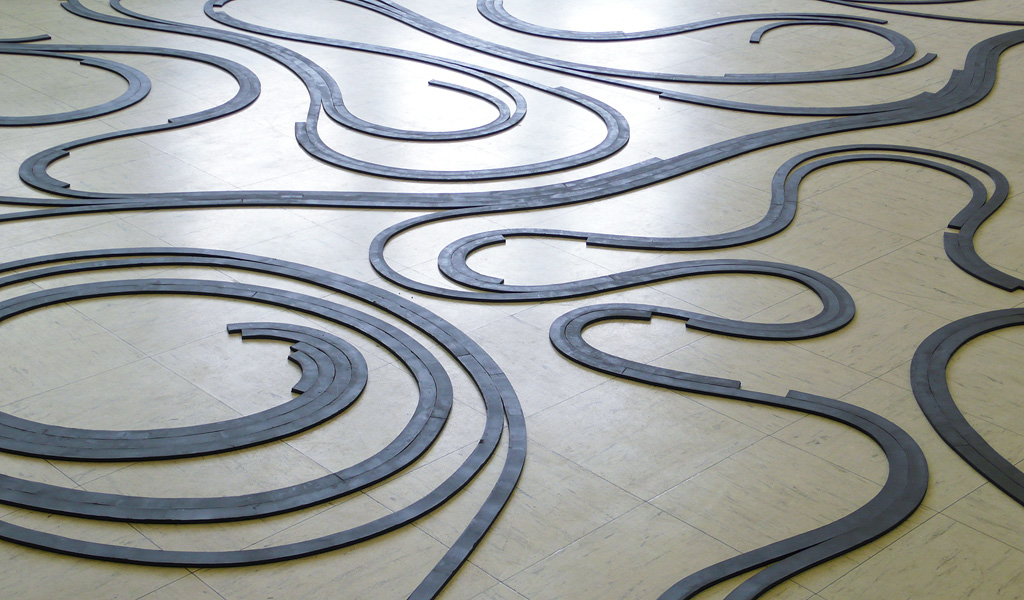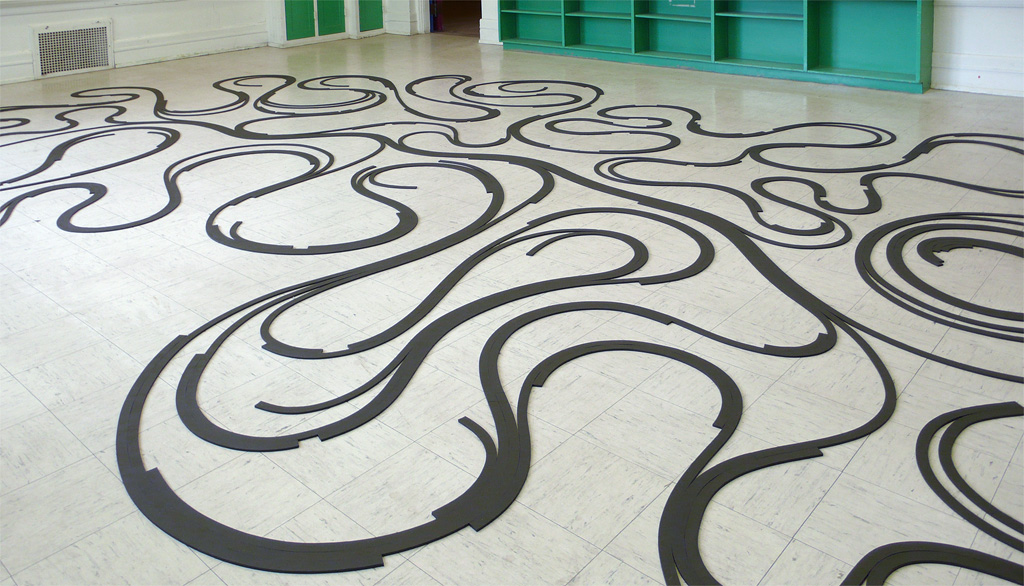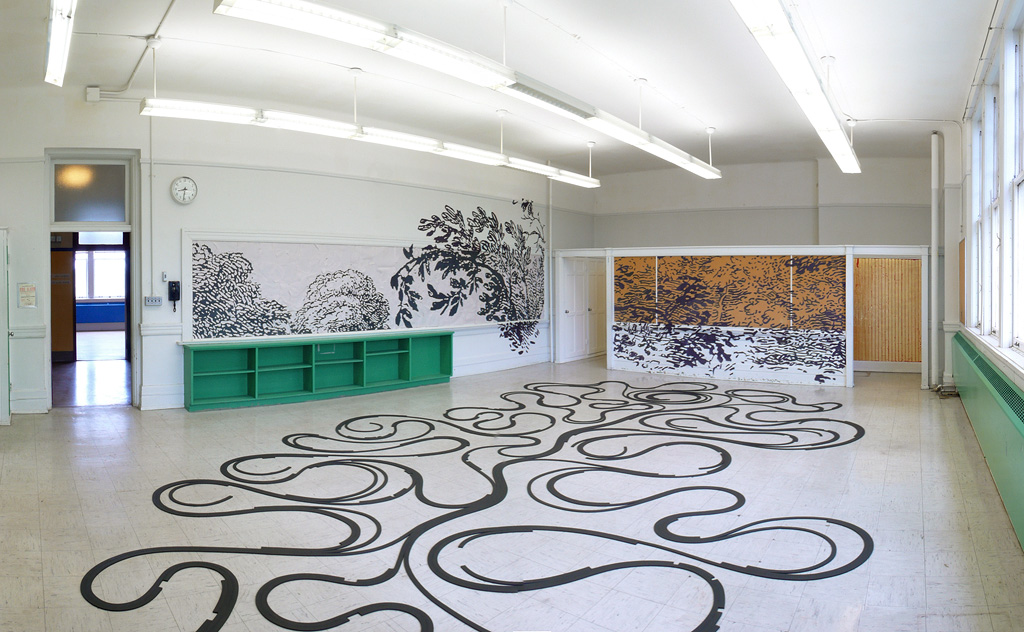
Study for Room 9
Study for Room 9 is made from 100 kilograms of modeling clay (plasticine), rolled out into slabs and, using a yardstick as a template, cut into long strips and arranged onto the floor. This school building is not much different than the one I attended so it isn’t hard imagine myself back there—bored, fidgety and daydreaming. What would that grade-three student do with this room? All that glorious expanse of floor demands that some sort of extravagance be dreamed into existence.
The desire to make models strikes me as universal. On one hand there is the literal modeling found in minatures, small versions of already existing things. For a certain school-age boy this might mean race cars, trains, or the like. On the other hand, a scientist or economist wields models with more serious intent. Models invite us to grapple with our world, to see it, and maybe feel some sense of control.
If Study for Room 9 is a model of anything, it would be for a way of thinking—a meandering, exploring, sideways kind of thinking. I always found school a little too straight-ahead for me, too Cartesian, too reliant on the correct answer. I offer, as an alternative model for learning, this daydream.
Study for Room 9, 2010, modeling clay, 4 x 7 m
Installed for Art School {dismissed} at the decomissioned Shaw Street School in Toronto


